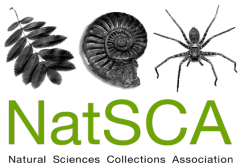Identifying and managing radioactive geological specimens
Certain minerals, particularly those containing uranium [U] and thorium [Th], emit natural ionising radiation that presents a hazard to humans. Not all are easily identified, and the problem is compounded when radioactive elements substitute into minerals that are not normally radioactive, or form an unrecognised constituent of a specimen, whether mineral, rock or fossil The extent of radioactive holdings in a collection can only be established by measuring ionising radiation emissions for all the geological specimens using appropriate detectors. Radioactivity is subject to a variety of legislation. The Ionising Radiation Regulations (1999) detail the requirements for the protection of persons exposed as a result of work with radioactive materials. However, geological specimens fall completely out of scope of the 2010 Environment Permitting (England and Wales) Regulations and the Radioactive Substances Act 1993 in Scotland and Northern Ireland. The Euratom Safeguards Treaty has placed additional responsibilities on some institutions. This paper summarises how to identify radioactive specimens, establish who is at risk, and set up local rules that keep risk as low as is reasonably practicable. It includes examples of different approaches taken in the authors’ institutions.
